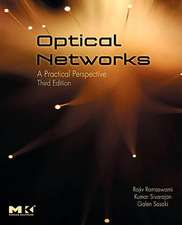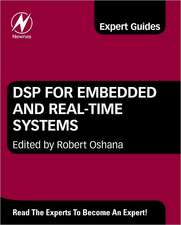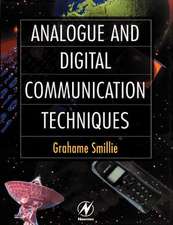Radiolocation in Ubiquitous Wireless Communication
Autor Danko Antolovicen Limba Engleză Paperback – 11 sep 2014
| Toate formatele și edițiile | Preț | Express |
|---|---|---|
| Paperback (1) | 885.63 lei 43-57 zile | |
| Springer Us – 11 sep 2014 | 885.63 lei 43-57 zile | |
| Hardback (1) | 642.03 lei 43-57 zile | |
| Springer Us – 9 feb 2010 | 642.03 lei 43-57 zile |
Preț: 885.63 lei
Preț vechi: 1080.04 lei
-18% Nou
Puncte Express: 1328
Preț estimativ în valută:
169.47€ • 177.38$ • 141.05£
169.47€ • 177.38$ • 141.05£
Carte tipărită la comandă
Livrare economică 31 martie-14 aprilie
Preluare comenzi: 021 569.72.76
Specificații
ISBN-13: 9781489985255
ISBN-10: 1489985255
Pagini: 204
Ilustrații: XV, 185 p.
Dimensiuni: 155 x 235 x 11 mm
Greutate: 0.29 kg
Ediția:2010
Editura: Springer Us
Colecția Springer
Locul publicării:New York, NY, United States
ISBN-10: 1489985255
Pagini: 204
Ilustrații: XV, 185 p.
Dimensiuni: 155 x 235 x 11 mm
Greutate: 0.29 kg
Ediția:2010
Editura: Springer Us
Colecția Springer
Locul publicării:New York, NY, United States
Public țintă
Professional/practitionerCuprins
Physical Principles of Radio Communication.- Radiolocation with Multiple Directional Antennas.- Forming the Radio Image with Multiple Antennas.- Radiolocator Design: High-Frequency Front End.- Radiolocator Design: Power Measurement and Digital Data Path.- Application to Wireless Networking: Tracking Sources in Real Time.- Application to Wireless Networking: Adaptive Response.- Engineering Aspects of the Transceiver Design.- Wider Application of Radiolocation in Digital Wireless Communication.- Appendices.
Textul de pe ultima copertă
Radiolocation in Ubiquitous Wireless Communication discusses the application of multi-antenna radiolocation to the environment of fast, widespread wireless communication among portable devices.
The book features distinctive information such as a description of a real-time, single packet radiolocation methodology, a detailed description of the architecture of two generations of working prototypes, the question of integrating radiolocation and data reception, and addresses adaptive directional communication with radiolocated sources. A functioning implementation of the transceiver architecture with multi-antenna radiolocation is described in detail.
Radiolocation in Ubiquitous Wireless Communication fills a void in the current technical literature by presenting issues involved in locating mobile wireless network agents. This book is a valuable reference for system design engineers in the field of handheld and portable communication, as well as experts in wireless management and security.
The book features distinctive information such as a description of a real-time, single packet radiolocation methodology, a detailed description of the architecture of two generations of working prototypes, the question of integrating radiolocation and data reception, and addresses adaptive directional communication with radiolocated sources. A functioning implementation of the transceiver architecture with multi-antenna radiolocation is described in detail.
Radiolocation in Ubiquitous Wireless Communication fills a void in the current technical literature by presenting issues involved in locating mobile wireless network agents. This book is a valuable reference for system design engineers in the field of handheld and portable communication, as well as experts in wireless management and security.
Caracteristici
Description of a real-time, single-packet radiolocation methodology Detailed description of the architecture of two generations of working prototypes Analysis of extensions and generalizations of this methodology to other applications





















